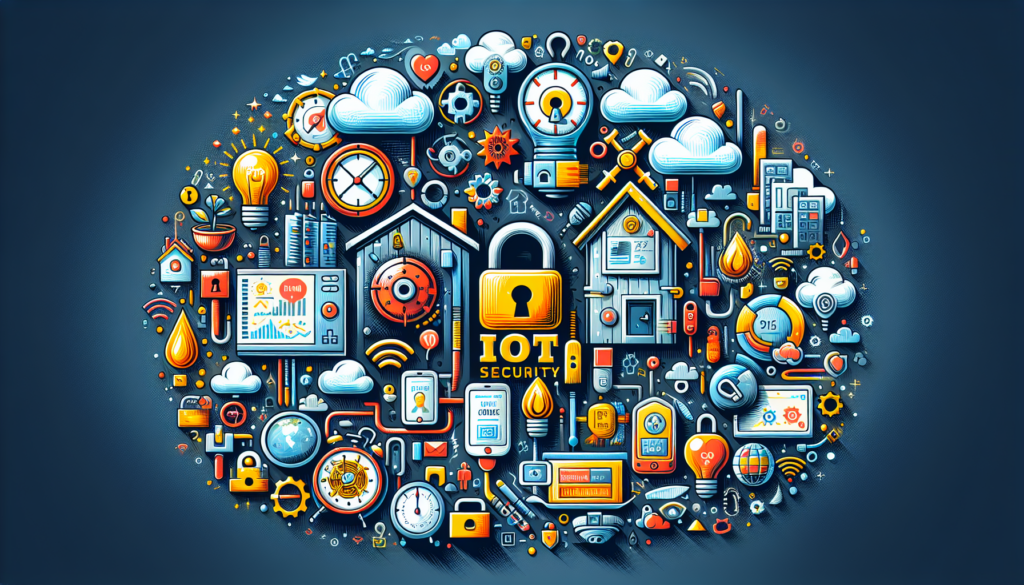The rise of the Internet of Things (IoT) in recent decades has revolutionized the interconnectivity between devices and transformed numerous aspects of everyday life and industry. As the integration of IoT devices into critical infrastructures intensifies and an ever-growing amount of sensitive data accumulates, good practices in terms of security become critically important. Implementing robust protection mechanisms is imperative to safeguard against potentially devastating vulnerabilities. This article provides a meticulous dissection of the most effective security strategies, evaluating the theory, practical applications, and recent technological developments, with the intention of arming professionals with an authoritative and up-to-date compendium of best practices in IoT security.
Foundations of IoT Security
Security Architecture
IoT security is anchored in a multi-layer architecture, where each stratum defends against specific threats. Fundamental components include physical security, network security, application security, and data security. Each layer must be implemented with rigorous controls, from hardware and software encryption to authentication protocols and identity management.
Critical Aspects: Identification and Authentication
Identification and authentication are pillars that prevent unauthorized access to IoT devices. The use of unique identifiers (UIDs) and robust authentication mechanisms, such as multi-factor authentication (MFA), are essential. In addition, advanced techniques like biometrics and secure tokens are emerging to add additional layers of security.
Data Encryption
Encryption is a crucial tool for maintaining the confidentiality and integrity of data. End-to-end encryption (E2EE) should be adopted to protect information in transit and storage. Encryption algorithms such as AES-256 have become de facto standards, but the evolution toward lightweight ciphers for resource-constrained devices is ongoing.
Technological Advances and Relevant Regulations
Blockchain and Smart Contracts
A promising innovation in IoT security involves the use of blockchain technologies for decentralized management and the immutable traceability of operations and transactions. Smart contracts can automate the enforcement of security policies and compliance, reducing the dependency on intermediaries and the ensuing security risks.
Privacy Enhanced by Design
Privacy by design is becoming a guiding principle in the evolution of IoT devices. This means that privacy and security are incorporated from the design and development phase of products, rather than being added as afterthoughts. Initiatives like the EU’s General Data Protection Regulation (GDPR) have catalyzed the adoption of this approach.
Regulations and Certifications
Conformance with established regulations and certifications provides a framework for the development and deployment of secure IoT devices. Standards such as ISO/IEC 27001 and NIST guidelines offer a structure for information security management and are industry benchmarks for best practices.
Practical Implementation of Security Strategies
Threat Modeling and Risk Analysis
For effective security, it is imperative to conduct detailed and tailored threat modeling and risk analysis for each IoT application. Proactive identification of potential vulnerabilities and assessing their potential impact guide the development of appropriate countermeasures.
Management of Updates and Patches
Implementing a secure system for update and patch management is vital to maintaining the integrity of software in IoT devices. Updates must be distributed securely and efficiently, ensuring all devices operate with the latest software and are protected against the most recent known threats.
Network Security and Monitoring
Implementing defenses in network security such as firewalls, segmentation, and intrusion detection and prevention techniques (IDS/IPS) is essential to protect IoT devices from network attacks. Moreover, constant monitoring facilitates early detection of suspicious activities and potential security breaches.
Case Studies and Lessons Learned
IoT Security Incidents
Case studies where IoT devices were compromised have demonstrated the importance of good security practices. The Mirai botnet incident in 2016 illustrates the consequences of ignoring security, where millions of IoT devices were infected and used to launch large-scale DDoS attacks.
Automotive Industry Innovations
The automotive industry has embraced IoT to enhance vehicle safety and efficiency. However, this has also introduced attack vectors. The sector’s response, such as the introduction of advanced driver-assistance systems (ADAS), has seen significant investment in integrated IoT security.
Prospects and Future Directions
The horizon for security in IoT devices is shaping up towards an even wider adoption of artificial intelligence and machine learning to anticipate and respond to security threats. Moreover, concerns over the eventual introduction of quantum computing and its impact on current encryption algorithms are driving research into quantum-resistant cryptography.
Security for IoT devices is not just a responsibility but an inadmissible necessity in the fabric of our technologically interwoven society. Adopting these good practices and constant innovation are key to mitigating risk and ensuring trust in an increasingly connected future through IoT.

